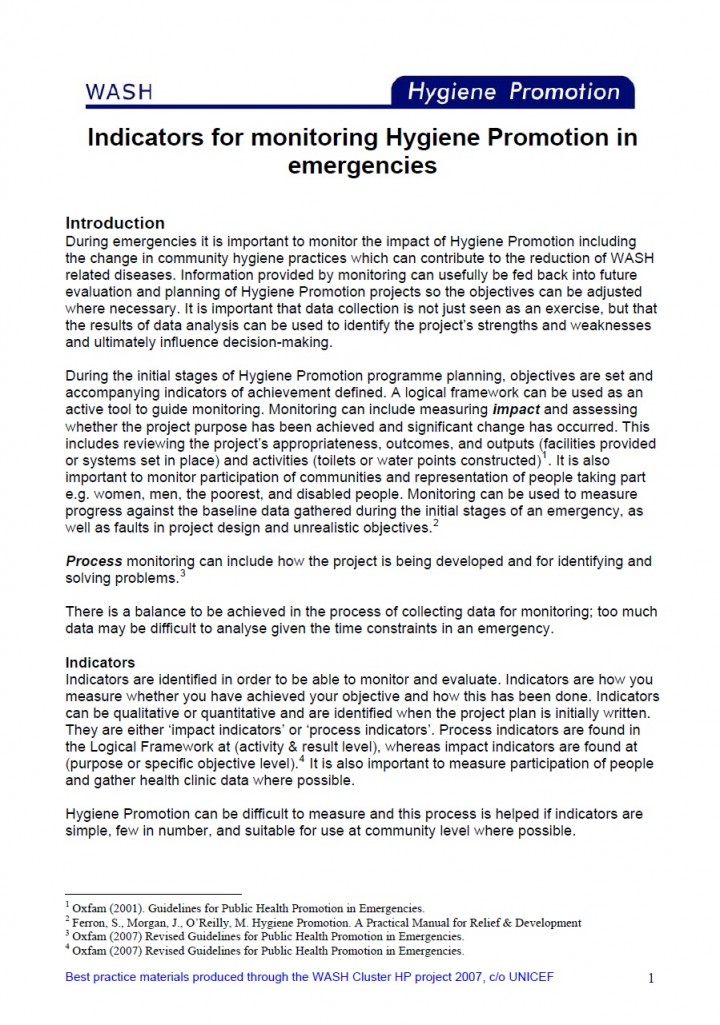Indicators for Monitoring Hygiene Promotion in Emergencies Best Practice Materials Produced Through the WASH Cluster HP Project UNICEF (2007)
During emergencies it is important to monitor the impact of Hygiene Promotion including the change in community hygiene practices which can contribute to the reduction of WASH related diseases. Information provided by monitoring can usefully be fed back into future evaluation and planning of Hygiene Promotion projects so the objectives can be adjusted where necessary. It is important that data collection is not just seen as an exercise, but that the results of data analysis can be used to identify the project’s strengths and weaknesses
and ultimately influence decision-making. During the initial stages of Hygiene Promotion programme planning, objectives are set and accompanying indicators of achievement defined. A logical framework can be used as an
active tool to guide monitoring. Monitoring can include measuring impact and assessing whether the project purpose has been achieved and significant change has occurred. This includes reviewing the project’s appropriateness, outcomes, and outputs (facilities provided or systems set in place) and activities (toilets or water points constructed)1. It is also important to monitor participation of communities and representation of people taking part e.g. women, men, the poorest, and disabled people. Monitoring can be used to measure progress against the baseline data gathered during the initial stages of an emergency, as well as faults in project design and unrealistic objectives.
Bibliographic information
UNICEF (2007). Indicators for Monitoring Hygiene Promotion in Emergencies Best Practice Materials Produced Through the WASH Cluster HP Project UNICEF
Filter / Tags
Guidelines and manualsEnglish
Downloads
Indicators for Monitoring Hygiene Promotion in Emergencies. Best Practice Materials Produced Through the WASH Cluster HP Project
Type: application/pdf
Size: 0.07 MB

